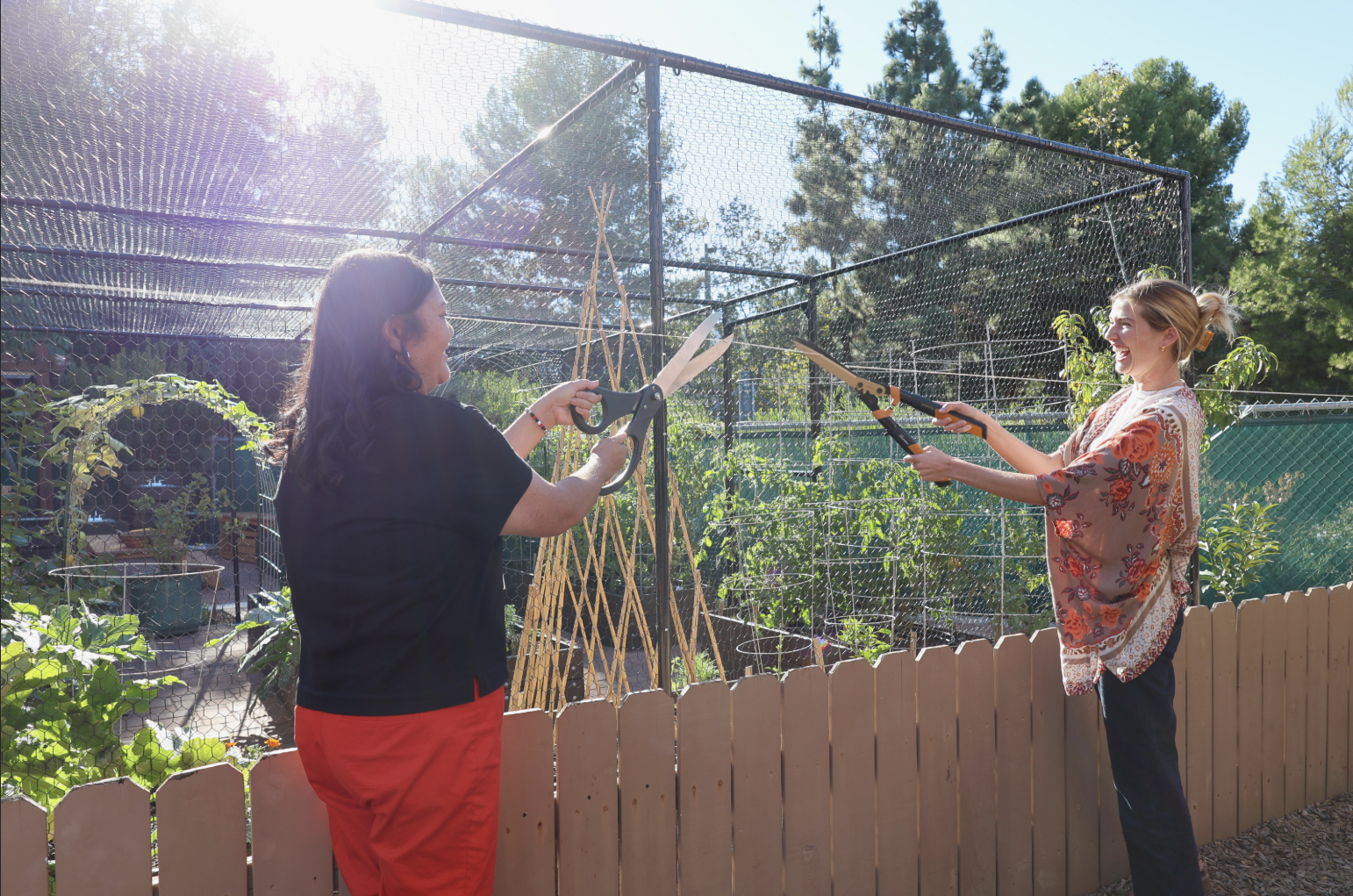After a decade without maintenance, San Diego State University’s student-led sustainability commission Green Love stepped in to restore and sustain the Children’s Center garden as an innovative outdoor classroom.
The garden’s grand opening on Oct. 17 aligned with back-to-school night and the first harvest of fruits and vegetables, marking a celebratory start to the season.
Director of SDSU Children’s Center Michelle Zamora and Green Love Sustainability Advisor Charlotte Roberts cut the ribbon outside of the garden while students and families gathered to look forward to a year of community, environmental action and fresh food.
According to Zamora and Roberts, the restored garden bears little resemblance to its former state. Once ravaged by hungry squirrels, birds and other critters, the garden is now teeming with life and color.
The center’s eager young students led their families through rows of garden beds, weaving between fresh yellow zucchinis, Jimmy Martello peppers and Glacier tomato vines already taller than them.
“The veggies will be harvested and used for cooking and science experiences for the children,” said Zamora.
Green Love has allocated a total of $79,500 to revamp the garden, according Roberts.
The main installation work for the garden was completed over the summer in collaboration with an external company called California Farm and Garden, a vendor that specializes in building interactive small-scale gardens.
In the next phase of the plan, Green Love members, Children’s Center staff and employed SDSU students will maintain the garden and create hands-on learning activities.
According to Zamora, the learning curriculum will aim to explore plant biology, food systems and environmental responsibility.
“The previous garden was only used by our preschool aged children,” Zamora said. “With the newly upgraded garden, we have doubled the plantable space which can be accessible to all children who attend the center.”
The center employs 125 SDSU students and serves 200 children, many of whom are the children of university faculty, staff or students, Roberts said.
As a program of the university’s Associated Students, the Children’s Center prioritizes creating an environment that fosters creativity and connection to nature.
The center is also known for their yearly art gala “A is for Art.”
The kids work together to study an artist and craft their own masterpiece. The last exhibition, held April 26, raised awareness and funds to support the garden renovation.
The Children’s Center and Green Love collaboration builds on previous joint efforts to drive campus sustainability. The two organizations worked on green energy and efficiency projects, including sun-powered thermal water heating and a solar panel system.
As the university’s go-to advocates for sustainable progress on campus, Green Love has secured meaningful environmental initiatives from sustainable building certifications to printer paper sourced from 100% recycled material.
Green Love jumped at the opportunity to partner with the Children’s Center on this new project, excited to instill a sense of stewardship for sustainable food systems and the natural world in future leaders, according to Roberts.
“We want to create a feeling of teamwork and shared responsibility,” Roberts said. “Being sustainable or participating in climate action isn’t just an individual action.”
The National Library of Medicine reports that gardening empowers ecological literacy for school-aged children. Actively engaging with the growing and harvesting process develops understanding of where food comes from and encourages greater interest in eating fruits and vegetables.
SDSU student and associate teacher at the Children’s Center Amelia Bernard said students at the center already show excitement when it comes to learning about plants.
She teaches activities about where different fruits grow, on trees and underground, and watches the kids interact with Memory Park, another garden which sits outside the Children’s Center.
“ I definitely think that it helps them be more adventurous with their eating and open to exploring different things,” said Bernard. “They’re more likely to try something that they’ve had so much hands-on experience with versus just like, you put it on the plate.”
According to PBS Kids, that hands-on nature connection goes deeper than trying new foods, and digging in the dirt also helps nourish the soul.
A new sense of biophilia, i.e. love for life rooted in nature, extends beyond the kids. Spending time around natural elements lowers stress and anxiety, improves concentration and boosts serotonin, according to Roberts.
Green Love members, staff and students will all benefit from an immersive and shared experience growing and harvesting food.
The restored garden symbolizes community-led commitment to sustainability and encouragement for future environmental leaders.
Through the collaboration between Green Love and the Children’s Center, students will learn firsthand how to cook what they have grown and complete the loop from seed to plate, according to Zamora.

